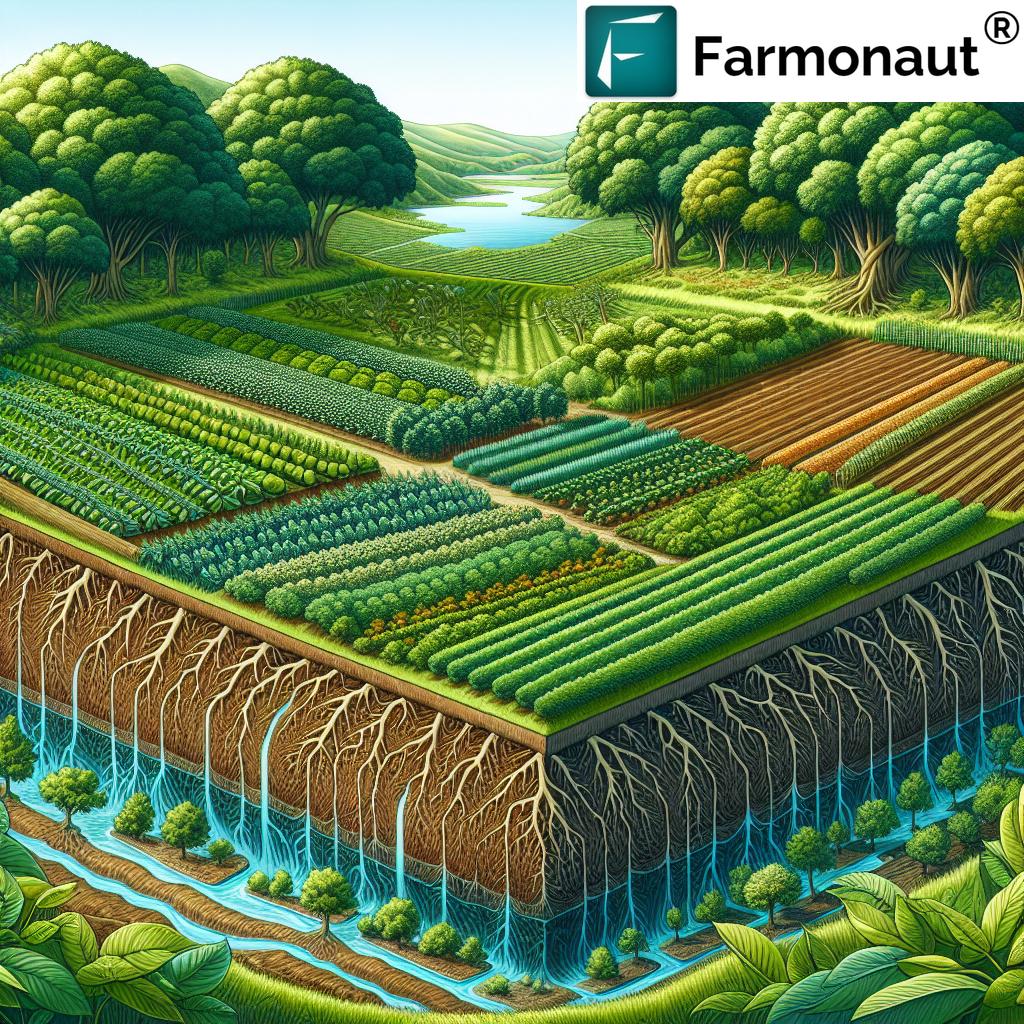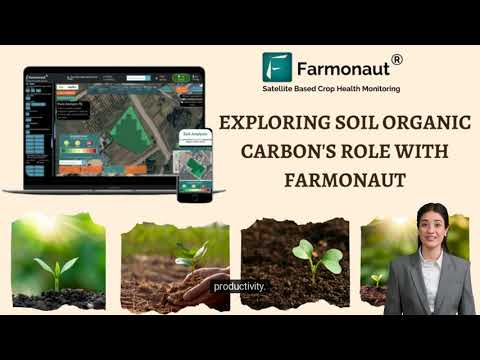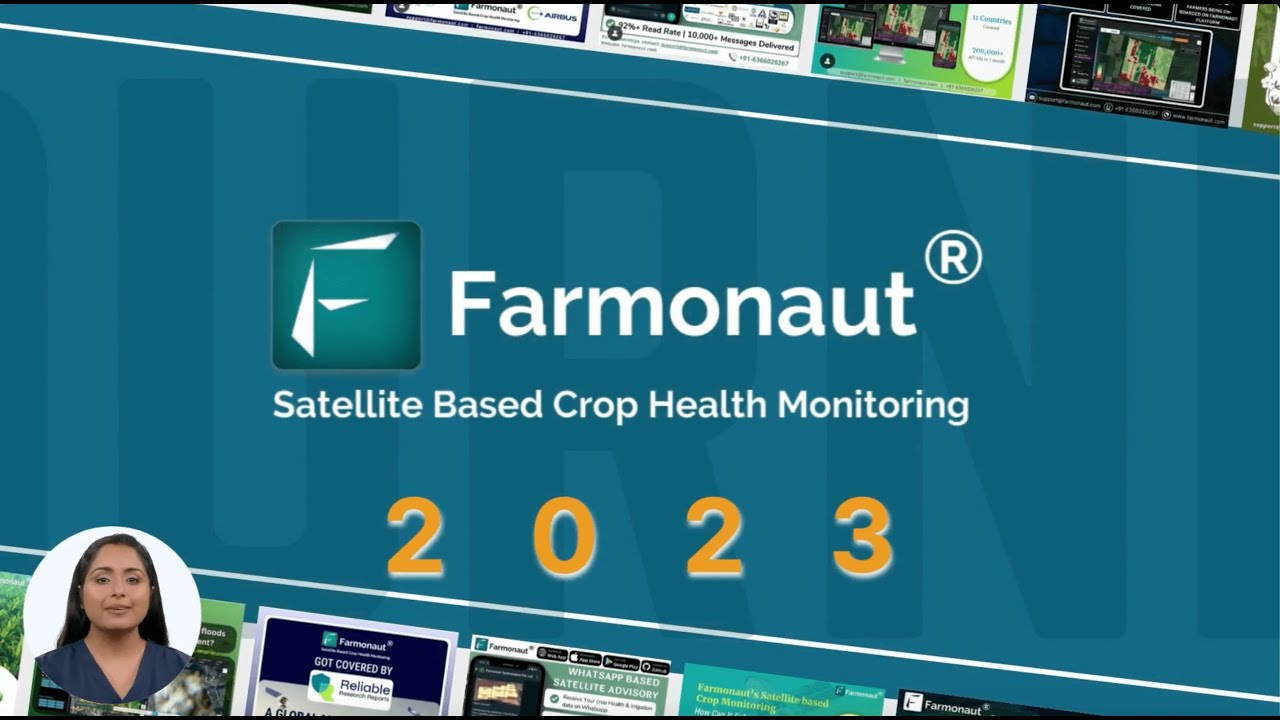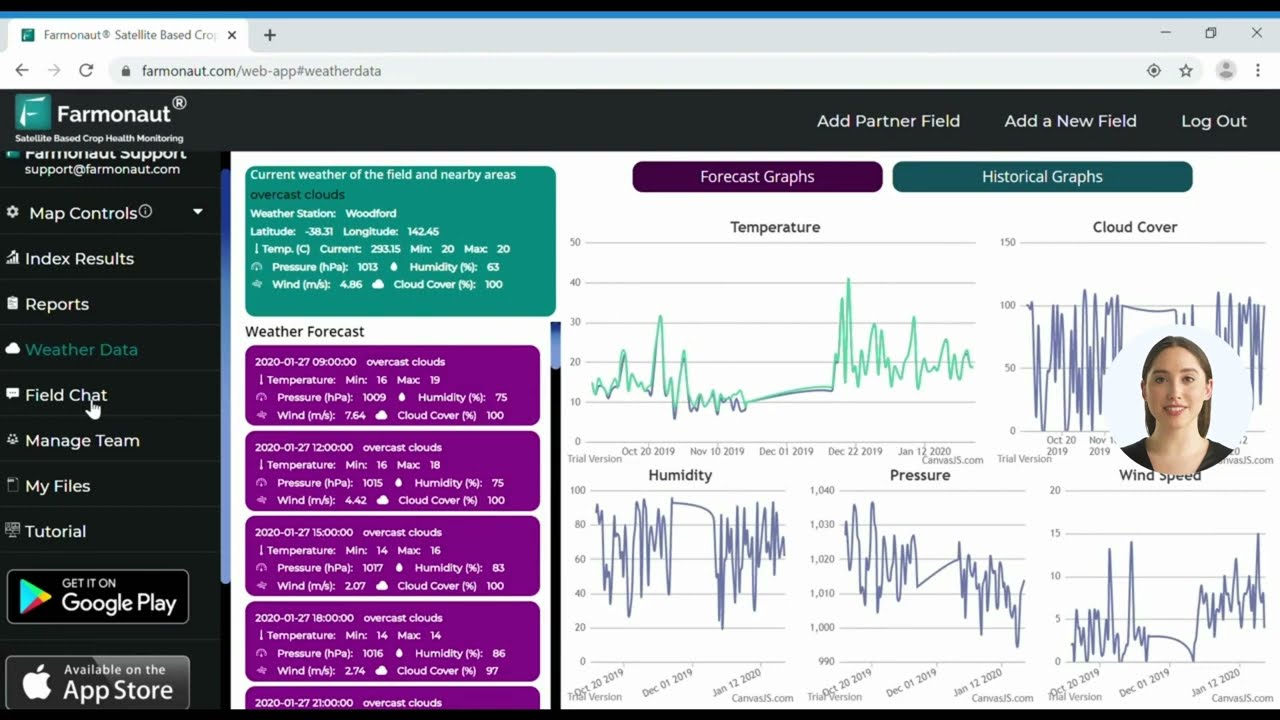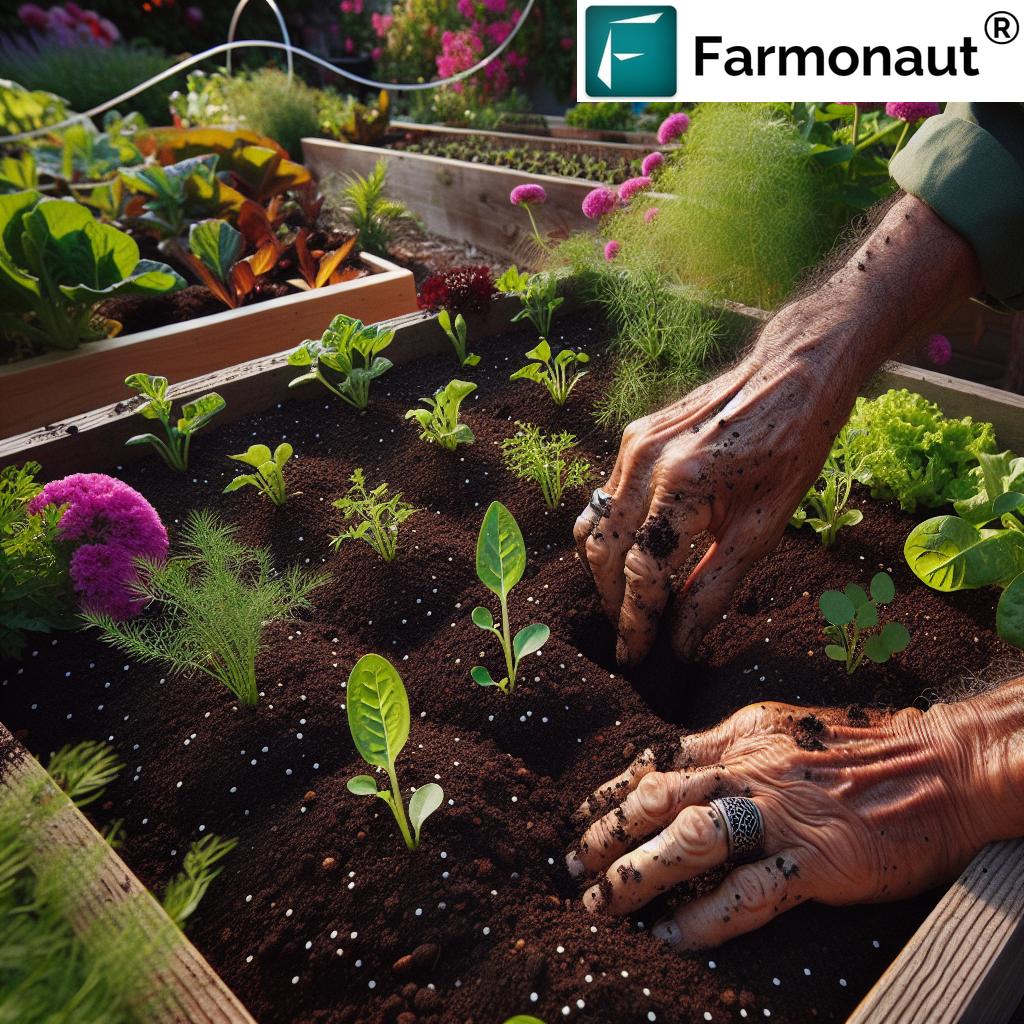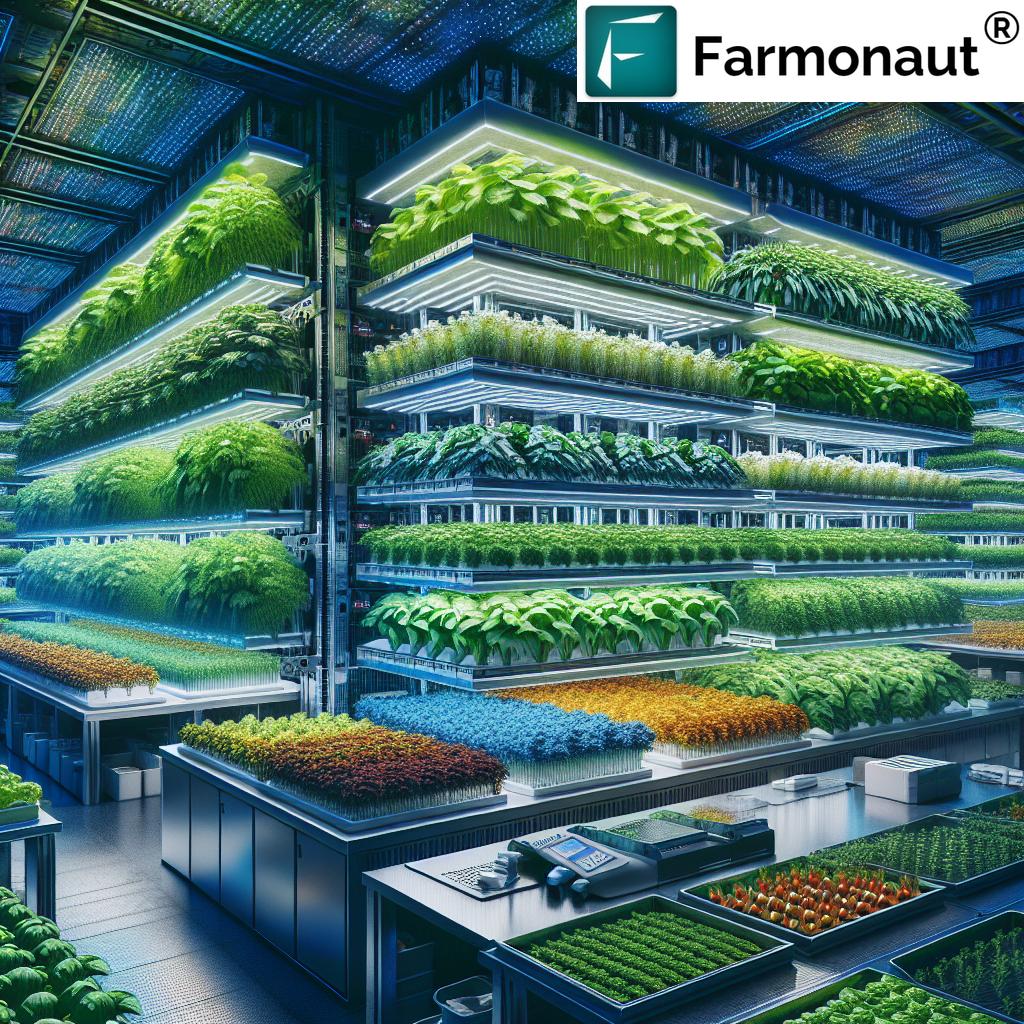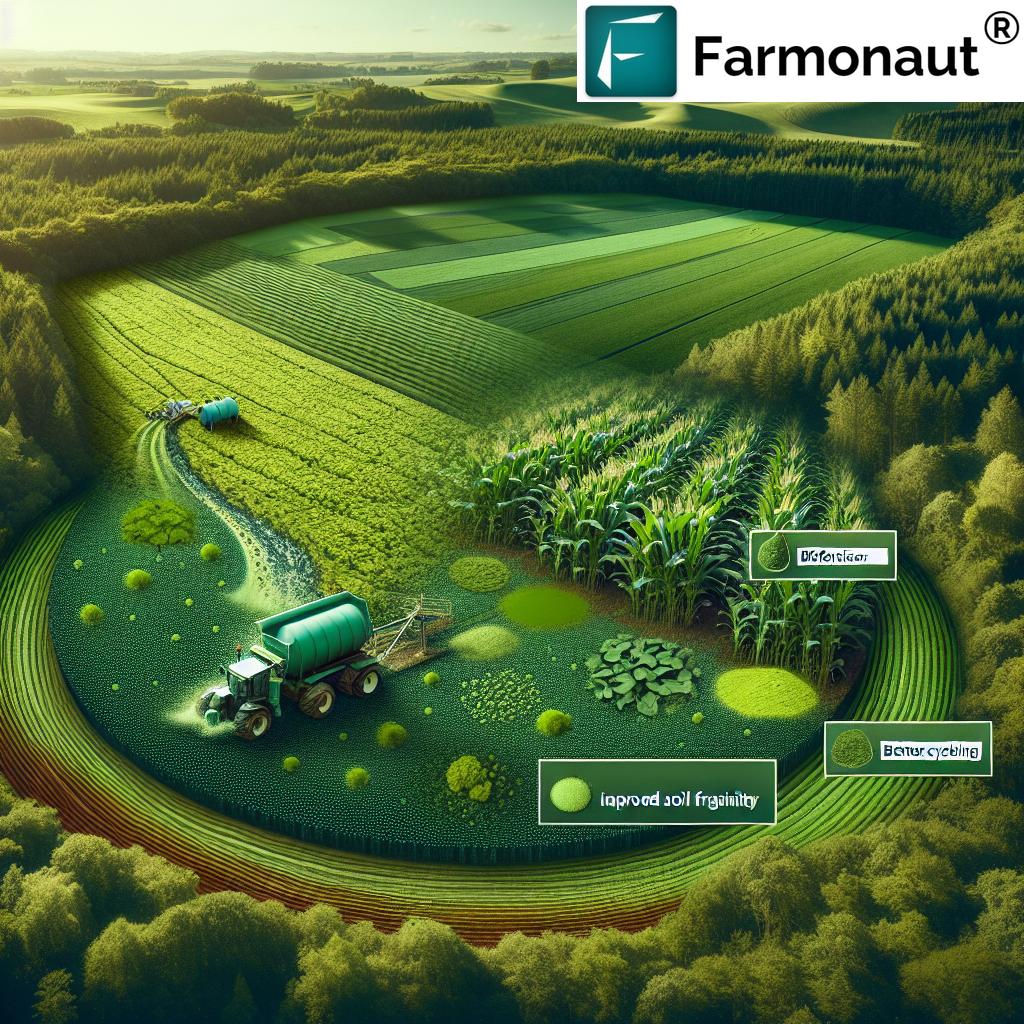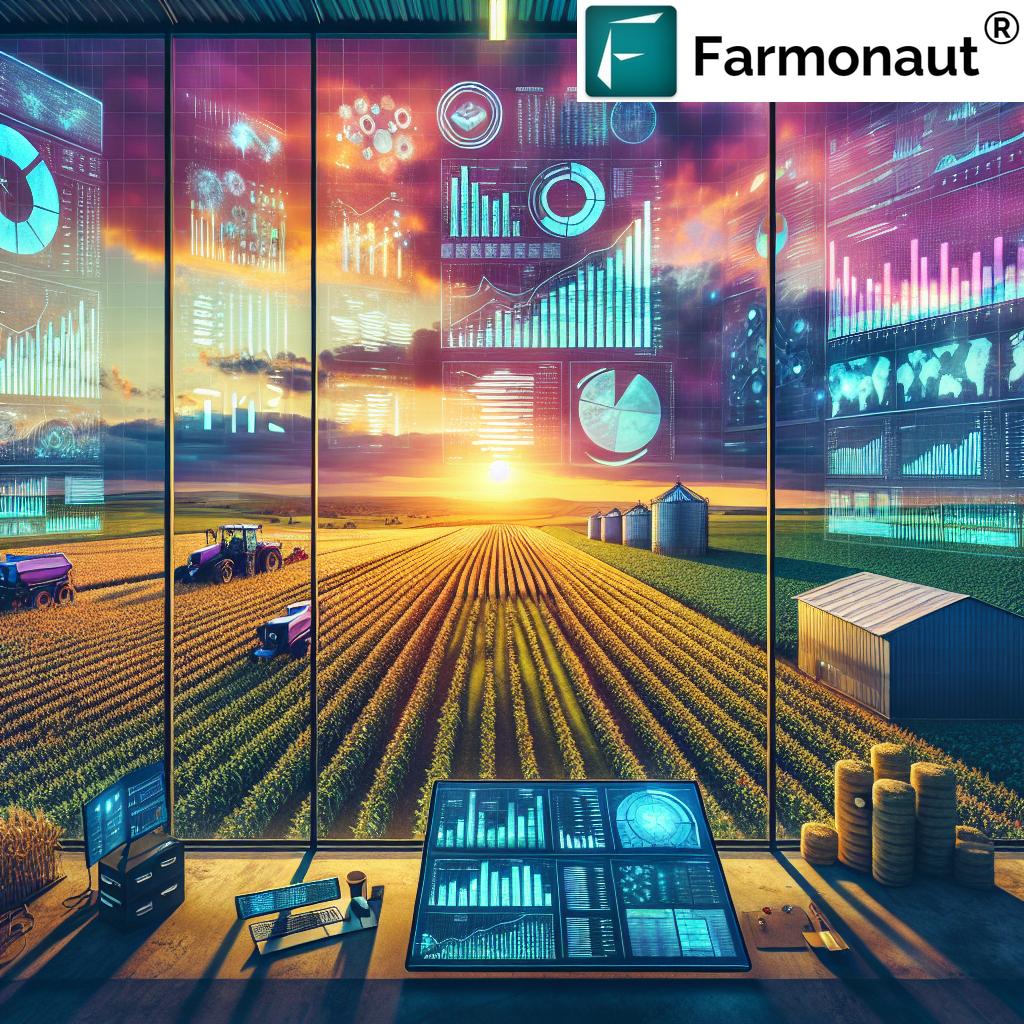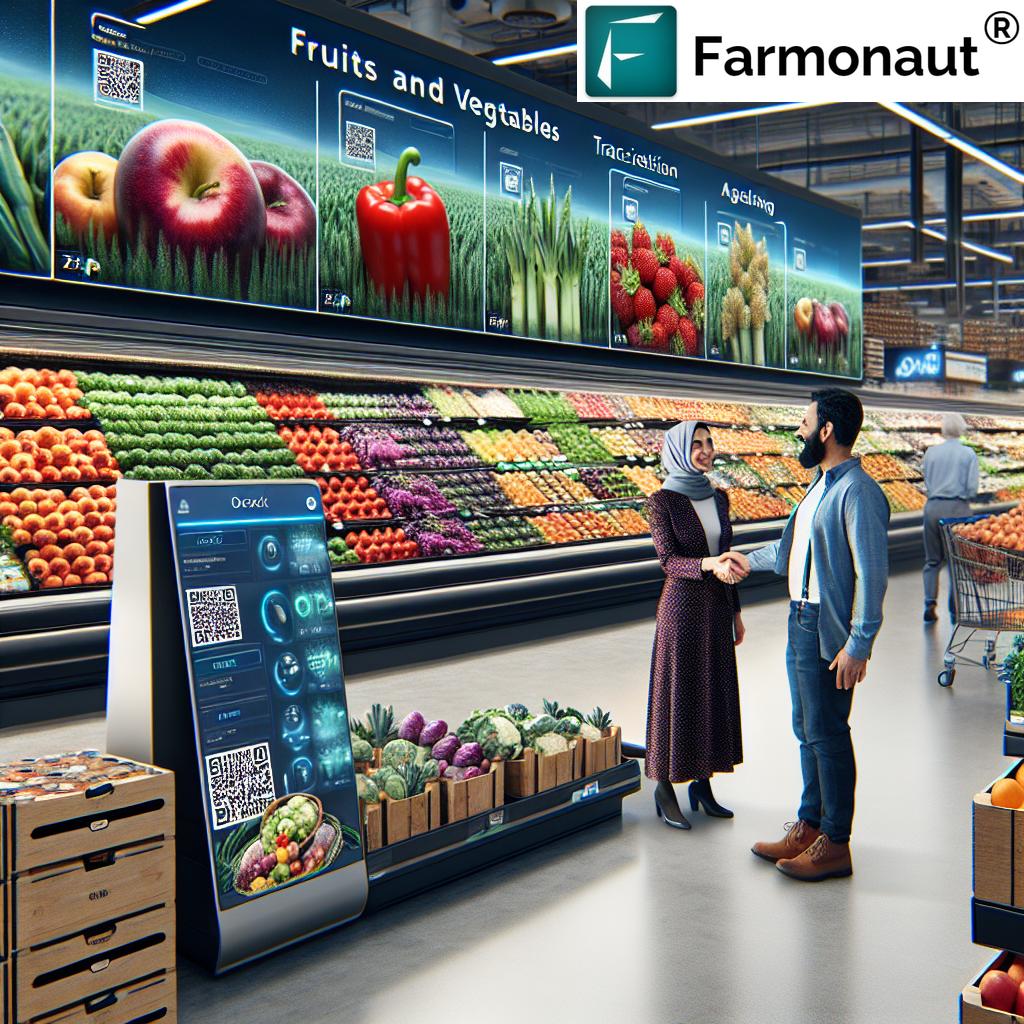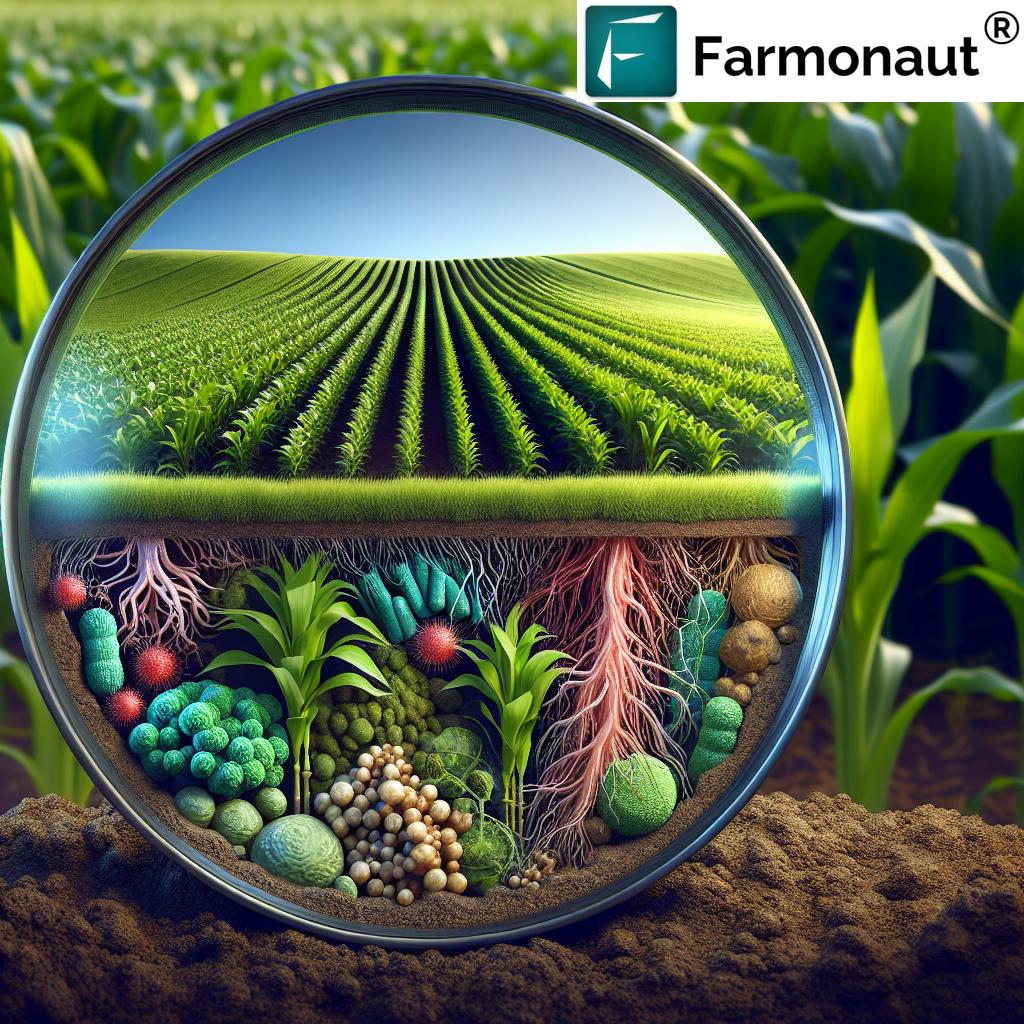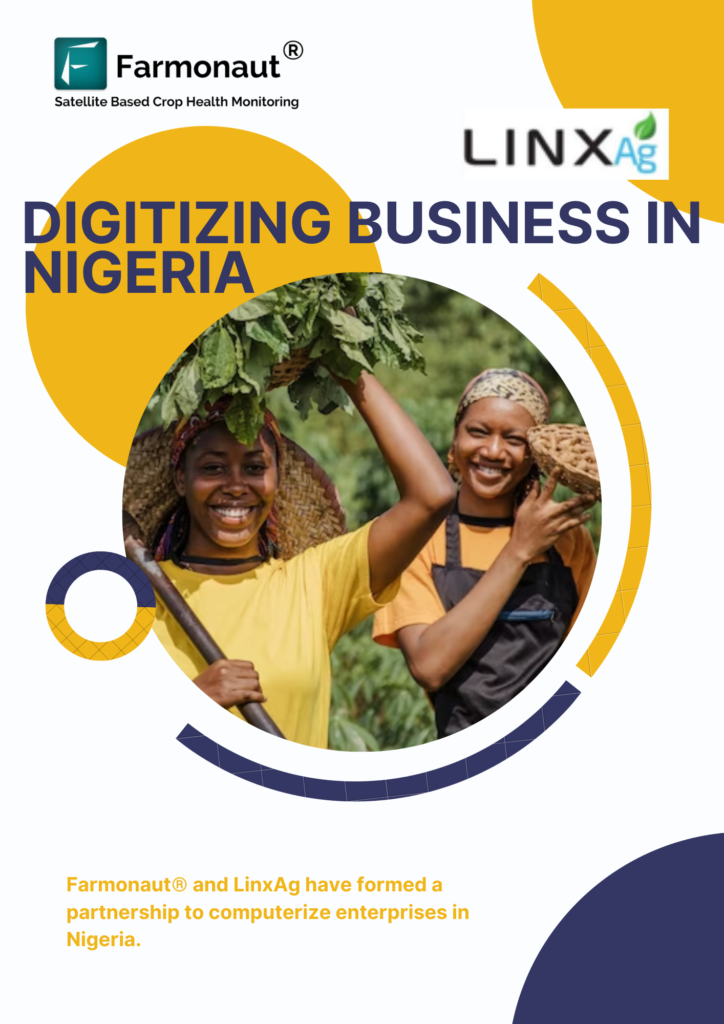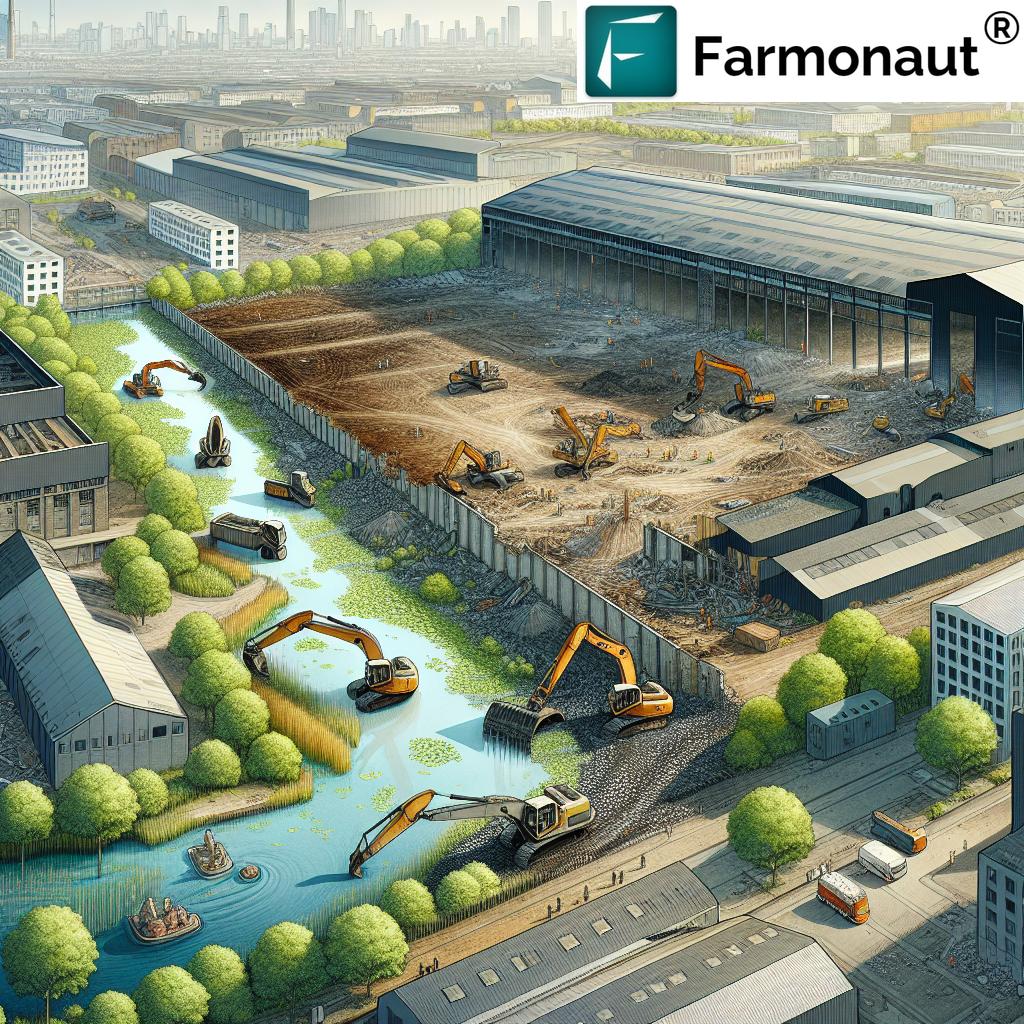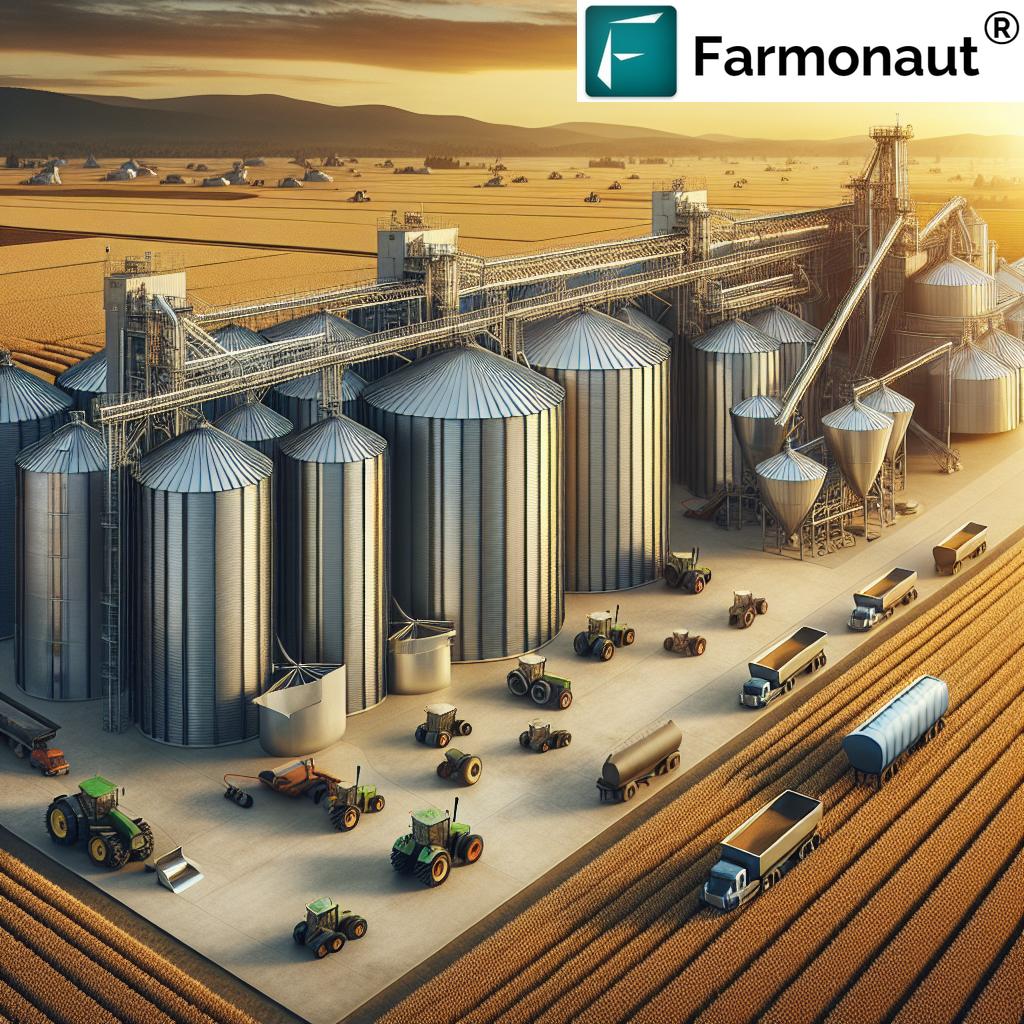Soil Erosion: Boost Yields Fast with These 7 Secrets!
Table of Contents
- Introduction: The Urgency of Preventing Soil Erosion
- Soil Erosion Trivia
- Understanding the Process of Soil Erosion
- Main Causes of Soil Erosion in Agriculture
- Impact of Soil Erosion on Agricultural Productivity
- Impact of Soil Erosion vs. Preventive Practices on Agricultural Yields
- 7 Secrets to Preventing Soil Erosion and Boosting Crop Yields
- 1. Conservation Tillage Practices
- 2. The Game-Changing Benefits of Cover Cropping
- 3. Mastering Terracing Techniques
- 4. Contour Plowing Techniques for Maximum Benefit
- 5. Agroforestry and Soil Conservation: Integrating Nature and Agriculture
- 6. Vegetative Filter Strips to Protect Water Quality
- 7. How Farmonaut Technology Empowers Sustainable Agriculture
- Powerful Soil Erosion Facts
- Frequently Asked Questions
- Conclusion: A Greener Tomorrow Starts Today
- Try the Farmonaut Apps & API
- Farmonaut Subscription Plans
Introduction: The Urgency of Preventing Soil Erosion
In the face of mounting global challenges—growing populations, climate unpredictability, and the ongoing need for increased productivity—soil erosion in agriculture stands as one of the most pressing yet overlooked threats. Soil, the uppermost fertile layer of earth, is the very bedrock of our food systems, forestry, and sustainable life. Yet, this vital layer is being worn away by natural forces such as wind and water, along with human activities like unsustainable farming, logging, and construction. The effects of soil erosion on crop productivity are severe: diminished fertility, reduced yields, environmental degradation, and threatened water quality. Preventing soil erosion is not just an agricultural goal—it’s essential for environmental sustainability, food security, and community prosperity.
In this comprehensive guide, we’ll explore the main causes of soil loss, dissect the true impact of soil erosion on yields, and—most importantly—reveal the 7 secrets that can rapidly boost your agricultural productivity, naturally and sustainably. Armed with advanced technologies like Farmonaut and science-backed land management practices, we can revitalize the earth beneath our feet for generations to come.
Understanding the Process of Soil Erosion
Soil erosion is the process where the uppermost fertile layer—rich in nutrients, organic matter, and vital biological activity—is worn away by natural forces or human activities. The topsoil that sustains healthy plant growth can be lost in months or even days, but forming new fertile soil takes hundreds to thousands of years.
- Water erosion occurs when rain or irrigation runoff detaches soil particles, washing them into waterways or across fields.
- Wind erosion lifts and carries away loose soil particles (dust storms in arid zones).
- Gravity & tillage erosion move soil down slopes, especially on land with poor structure and vegetative cover.
When these forces are combined with unsustainable agricultural practices, the problem multiplies—leading to a vicious cycle of soil fertility loss, reduced yield, and environmental degradation.
Main Causes of Soil Erosion in Agriculture
Understanding the causes of soil erosion allows us to choose the most effective preventive measures. Let’s examine the key factors, especially as they relate to modern agriculture, forestry, and land management.
Conversion and Depletion: Agricultural Practices
- Conversion of natural ecosystems to fields: Exposes the topsoil by removing native vegetation that once protected it from wind and water.
- Monocropping and excessive tillage: Repeatedly growing a single crop or frequent soil disturbance through deep plowing depletes soil structure and nutrients, making the land more susceptible to erosion.
- Lack of crop rotation: Reduces organic matter and beneficial microbial activity, increasing erosion risk.
Deforestation & Logging
- Deforestation for agriculture/logging: Removes trees and their deep root systems that stabilize soil. Without this, the soil becomes vulnerable to being washed or blown away.
Overgrazing by Livestock
- Allowing livestock to graze excessively: Destroys protective plant cover, causes compaction, and exposes bare soil to erosion agents.
Use and Overuse of Agrochemicals
- Overuse of pesticides and fertilizers: Disrupts soil microbial activity, further reducing soil fertility and structure, making the land more prone to erosion.
Additional Factors
- Over-irrigation increasing runoff
- Improper road building and construction
- Neglecting natural water flow patterns
Impact of Soil Erosion on Agricultural Productivity
The effects of soil erosion on crop productivity and environmental quality are wide-reaching:
- Reduced Soil Fertility: The loss of uppermost, nutrient-rich layer diminishes land’s ability to support robust, healthy crop growth.
- Decreased Agricultural Productivity: Less fertile soils mean lower crop yields and greater yield variability.
- Economic Losses for Farmers: Declining productivity prompts increased costs (seeds, fertilizers, irrigation), threatening farm profitability.
- Pollution & Water Quality Degradation: Eroded particles carry fertilizers and pesticides into water bodies, causing pollution, harming aquatic ecosystems, and increasing treatment costs.
- Increased Flood Risks: Poor soil structure reduces water absorption, leading to higher runoff, flash flooding, and land instability.
- Long-term Ecosystem Degradation: Erosion depletes organic carbon, nutrients, and microbial diversity, undermining sustainability for years to come.
Impact of Soil Erosion vs. Preventive Practices on Agricultural Yields
This comparison table showcases the dramatic differences between land affected by unchecked soil erosion and land protected by sustainable preventive measures like cover cropping, conservation tillage, contour plowing, mulching, and more.
| Key Factor | With Soil Erosion | With Preventive Practices |
|---|---|---|
| Land Fertility | 20–60% decrease in topsoil organic content | Up to 30% increase in organic matter and micronutrients |
| Crop Productivity | 20–50% yield loss on severely eroded land | 10–40% yield improvement on protected soils |
| Soil Organic Matter | Depleted (<2%) | Increased (2–5%), better microbial activity |
| Water Retention | Up to 50% reduction; poor drought resilience | Up to 30% improved water retention & less runoff |
| Overall Environmental Impact | Water pollution, increased flooding, degraded ecosystems | Cleaner water, healthier wildlife, increased biodiversity |
7 Secrets to Preventing Soil Erosion and Boosting Crop Yields
Let’s unlock the 7 best-proven sustainable solutions for preventing soil erosion, restoring land fertility, and maximizing your agricultural productivity—all while protecting our environment.
1. Conservation Tillage Practices: A Powerful Erosion Control Tool
Traditional tillage disturbs the soil structure, breaking up aggregates and exposing the soil layer to wind and water erosion. Conservation tillage practices—including no-till and low-till systems—greatly decrease these risks:
- Preserves soil structure, keeping organic matter and microbial life intact
- Minimizes bare soil exposure to natural forces
- Reduces runoff and surface compaction
- Lowers labor and fuel costs
Many farmers have transitioned to no-till using specialized planters, discovering both reduced soil loss and improved yields.
Want the highest precision in deciding when and where to till?
Check out Farmonaut’s Carbon Footprinting solution to monitor your practices’ impact on soil health and your carbon emissions, and guide you toward more sustainable land management!
2. The Game-Changing Benefits of Cover Cropping
Cover cropping is one of the most effective ways to prevent soil erosion and improve soil fertility, especially during the off-season when fields might otherwise be bare.
- Deep root systems stabilize soil and reduce wind/water runoff
- Enhance soil organic matter and structure
- Trap nutrients that might otherwise leach away
- Smother weeds and disrupt pest cycles
Legumes such as clover or vetch can also fix atmospheric nitrogen, further boosting soil fertility for future main crop cycles.
Did you know?
Track seasonal soil changes, vegetation density, and more with Farmonaut’s crop health monitoring for tailored insights into the ideal timing and choice of cover crops for your specific land.
3. Mastering Terracing Techniques: Managing Slopes to Slow Erosion
Sloped and hilly lands are especially susceptible to erosion by runoff. Terracing is the practice of constructing flat, step-like areas on slopes to slow water movement and reduce soil loss:
- Intercepts surface runoff and minimizes water velocity
- Improves water retention and infiltration
- Enables productive agriculture on risky terrain
Proper terracing is a cornerstone of sustainable agriculture in mountainous/undulating landscapes around the globe.
Need help mapping your slopes and optimizing terrace design?
Leverage Farmonaut’s Large Scale Farm Management platform for satellite-based terrain analysis and planning.
4. Contour Plowing Techniques for Maximum Benefit
Contour plowing is the practice of plowing along the contours of a slope—not up and down. This technique dramatically reduces the speed of water runoff and prevents rills/gullies from forming.
- Minimizes soil loss on sloped land
- Promotes water infiltration rather than surface flow
- Works synergistically with terraces and strip cropping
Multi-year research shows contour plowing techniques can cut soil erosion by over 50% compared to conventional up-and-down plowing.
Monitor real results in the field using:
Farmonaut crop health monitoring—see the difference in vegetation density and soil moisture for each plowing method.
5. Agroforestry and Soil Conservation: Integrating Nature and Agriculture
Agroforestry involves planting trees and shrubs among crops or pastures, mimicking natural ecosystems. This offers multiple layers of protection:
- Tree roots stabilize soil, reducing both wind and water erosion
- Leaf litter enriches soil organic matter
- Canopies block wind, and buffer fields from heavy rain
- Enhances biodiversity and provides secondary yields (fruits, nuts, timber)
Integrating trees is not only a soil erosion control measure—it’s also a climate mitigation strategy.
For expert agroforestry advisory and forest cover monitoring, visit the Farmonaut Crop, Plantation & Forest Advisory page.
6. Vegetative Filter Strips: Buffering Farms for Clean Water
Vegetative filter strips are permanent, densely planted grass or shrub areas located between fields and water bodies. Their impact is profound:
- Traps sediment and nutrients before they reach lakes, streams, or rivers
- Reduces agrochemical runoff—protecting downstream water quality
- Offers habitat for wildlife and pollinators
Even 3–6 meter wide vegetative strips along field edges can remove over 80% of sediment and associated pollutants from farm runoff.
Maximize your environmental stewardship—
See how Farmonaut’s precision tools can help map waterways and optimize strip locations for maximum impact.
7. How Farmonaut Technology Empowers Sustainable Agriculture
Technology is a game-changer for modern soil and land management. Farmonaut, a leader in agricultural technology, is making precision agriculture accessible and affordable for everyone from smallholders to agribusinesses.
Farmonaut’s Key Features for Soil Erosion Control:
- Satellite-Based Crop Health Monitoring—Access real-time crop and soil conditions (NDVI, moisture, etc.) to detect erosion risks immediately.
- AI Advisory System (Jeevn AI)—Personalized, data-driven crop management advice for sustainable tillage, rotation, and cover cropping.
- Blockchain Traceability—Complete transparency and trust from field to market; assure buyers of sound land stewardship with Farmonaut’s product traceability system.
- Resource Management & Fleet Tracking—Optimize logistics for minimum field compaction and efficient field operations with Farmonaut’s fleet management solutions.
- Carbon Footprinting—Track your environmental progress and comply with sustainability standards; quantify improvements from erosion-preventive practices with Farmonaut’s carbon tracking.
- Satellite Verification for Crop Loan & Insurance—Streamline insurance with satellite proof of land stewardship and crop health, improving access to finance for sustainable investment.
Benefit from Farmonaut’s app (available on Android, iOS, and web) or explore API access for custom integration:
- Farmonaut API for developers, agribusinesses, and researchers
- API Documentation
Farmonaut isn’t a marketplace, manufacturer, or regulatory body—it’s a pioneering provider of data, insights, and technology to empower sustainable decisions at every level.
Frequently Asked Questions about Soil Erosion & Sustainable Agriculture
What is soil erosion, and why is it important to address?
Soil erosion is the process in which the uppermost fertile soil layer is worn away by wind, water, or unsustainable human activities (such as excessive tillage, deforestation, or overgrazing). Preventing soil erosion is critical because the topsoil is rich in nutrients and organic matter—essential for crop productivity, water retention, and healthy ecosystems.
How do agricultural practices contribute to soil erosion?
Common practices like converting natural land to crops, monocropping, excessive tillage, neglecting crop rotation, and improper chemical usage expose fertile soil, weaken structure, and deplete organic matter, increasing vulnerability to erosive forces.
What are the environmental impacts of soil erosion?
Soil erosion leads to decreased land fertility, reduced crop yields, pollution from sediment and agrochemicals in water bodies, increased flooding risks, and long-term ecosystem degradation.
How can farmers quickly reduce soil erosion?
Rapid improvements are possible using techniques such as conservation tillage, cover cropping, contour plowing, terracing, agroforestry, and vegetative filter strips. Combining these with real-time monitoring (e.g., Farmonaut’s technology) empowers precise, data-driven actions.
How does Farmonaut help fight soil erosion?
Farmonaut provides satellite-based mapping, crop health monitoring, AI-driven advisory for sustainable farm practices, and blockchain traceability—helping users prevent erosion, improve land management, and document their progress for regulatory or market incentives.
Is Farmonaut suitable for smallholder farmers and large estates alike?
Absolutely! Farmonaut’s solutions are designed to be scalable and affordable, serving everyone from individual farmers to cooperatives, NGOs, large agribusinesses, and government agencies worldwide.
Farmonaut Subscription Plans for Sustainable Yield Boosts
Curious about how you can integrate real-time soil and crop monitoring in your sustainability journey?
Explore Farmonaut’s flexible subscription plans—pay only for what you need, whether you’re tracking a single field or managing thousands of hectares.
Conclusion: A Greener Tomorrow Starts Today
Soil erosion may be a natural process, but its human-accelerated pace in modern agriculture poses one of the most urgent threats to food security and environmental sustainability. By embracing the 7 secrets—conservation tillage, cover cropping, terracing, contour plowing, agroforestry, filter strips, and smart technology—we can renew our land’s fertility, boost yields, and leave a resilient legacy for the next generation.
Nobody can reverse erosion overnight, but every sustainable step—guided by data, science, and the right digital tools—brings us closer to a thriving, healthy planet. Let’s nurture our topsoil, adopt nature-based solutions, and harness the power of Farmonaut for a truly sustainable, productive future in agriculture.
Or integrate our powerful API into your own solution:
Farmonaut Satellite & Weather API | Developer Docs


